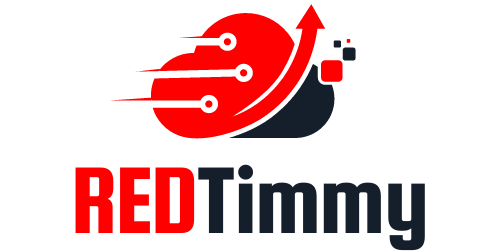Knowing the key differences between full-time and part-time employees is key for managing your team well. It helps you plan better for your business needs.
Full-time workers usually put in 35 hours or more each week. On the other hand, part-time workers work less than 35 hours.
This difference is crucial for your company’s success and planning for the future.
Key Takeaways
- Full-time employees typically work 35 hours or more per week.
- Part-time employees usually have flexible hours, working fewer than 35 hours.
- Understanding employee distinctions helps improve workforce planning.
- Your business may benefit from either type of employment depending on specific needs.
- Both full-time and part-time roles contribute to team dynamics in unique ways.
Full-Time Employees in Detail

Full-time employees are key to an organization’s success. They bring stability and help the company grow. Knowing what they do, their benefits, and the jobs they usually have is vital for understanding the workforce.
Definition and Characteristics
Full-time workers usually put in 35 to 40 hours a week. They have a regular schedule, which makes things predictable for everyone. This job security, career growth chances, and a strong commitment to their work are what set them apart.
This level of involvement helps build strong team bonds and boosts performance. It’s a win-win for both the company and the employees.
Benefits and Perks
Employers offer many benefits to full-time staff to make their jobs better and their lives easier. These perks often include health insurance, retirement plans, paid vacation, and chances to learn new skills. Such packages help draw in and keep skilled people who want to make a big impact at your company.
Of course, this can depend on whether you are self-employed or you are a freelancer.
Common Industries and Roles
Full-time jobs are found in many fields, each needing different skills and knowledge. You’ll find them in healthcare, education, tech, and finance. People in these fields enjoy structured work and get access to resources that help them grow in their careers.
Knowing what roles are common gives you clues on how to shape your hiring to fit industry needs.
| Industry | Common Roles | Key Full-Time Employee Benefits |
|---|---|---|
| Healthcare | Doctors, Nurses, Administrators | Health insurance, PTO, Retirement plans |
| Education | Teachers, Counselors, Administrators | Health benefits, Professional development, Paid leave |
| Technology | Software Developers, IT Support, Project Managers | Flexible scheduling, Health plans, Stock options |
| Finance | Accountants, Financial Analysts, Investment Managers | Health benefits, Retirement plans, Bonus structures |
What makes a Part-Time Employee?

Part-time employees are key in today’s workforce. They bring flexibility and adaptability to businesses and workers. Knowing what part-time jobs are and what they offer can help use their potential in different industries.
Definition and Characteristics
Part-time jobs mean working less than full-time, usually less than 30 hours a week. They’re great for people who need to balance work with other life things. This could be students, retirees, or parents.
These jobs offer a chance to work around other commitments. Companies use part-time workers to fill gaps in their staff. It helps create a workforce that can adapt easily.
Flexibility and Work-Life Balance
Part-time jobs are known for their flexibility. This lets people manage their time well, fitting in school, family, or hobbies. This balance makes part-time workers happier and more engaged at work.
They often feel more satisfied and motivated. This leads to a more productive team.
Ideal Roles for Part-Time Work
Part-time jobs are found in many fields like retail, hospitality, and healthcare. These areas often need more workers at certain times. Part-time jobs are perfect for these situations.
- Cashiers and retail assistants
- Food service staff
- Administrative support
- Customer service representatives
- Tutoring and educational roles
By valuing part-time workers, companies can build a flexible team. This team can quickly adjust to changes and improve overall performance.
Making the Right Choice for Your Business

Choosing the right employee type, full-time or part-time, and proper management is crucial for your business. Start by looking at your specific needs. Think about the projects you have, your budget, and how your team works together. These factors will help you decide what’s best for your company.
Evaluating Your Business Needs
First, look at the projects you’re working on. Do they need someone’s full attention, or can they be handled with flexible hours? Think about how your company is set up and how each role helps you reach your goals. Your business needs will tell you if you need dedicated full-time staff or flexible part-time workers.
Cost Implications of Hiring
Hiring full-time or part-time employees affects your costs. Full-time workers are stable and might work harder, but they cost more with benefits and higher pay. Part-time workers are cheaper but might not be as available or engaged. It’s important to weigh these costs against what each type of employee brings to your business.
Impacts on Team Dynamics and Culture

Your team’s makeup shapes your company’s culture. Full-time workers can create a steady team and deep knowledge. Part-time staff can bring new ideas and flexibility. Understanding how different employees change your team’s dynamics and culture is key to keeping a positive workplace.
| Employee Type | Benefits | Costs | Influence on Team Dynamics | Work Culture Impact |
|---|---|---|---|---|
| Full-Time Employees | Consistency, deeper engagement | Higher salaries, more benefits | Stability, enhanced collaboration | Stronger team culture, shared values |
| Part-Time Employees | Flexibility, diverse skills | Lower salary costs, fewer benefits | Varied workloads, adapting roles | Broader perspectives, potential for less cohesion |
Summary
The choice between full-time and part-time employees is key to your company’s success. Knowing the differences helps you make smart choices that fit your goals. Whether you prefer full-time commitment or the flexibility of part-time jobs, it’s important to understand these aspects.
Choosing the right employees can greatly improve productivity and job satisfaction. When hiring, think about how full-time and part-time roles affect your team’s work and morale. A balanced team meets its goals and helps employees do their best.
Always review your hiring strategy to meet your business needs. Making good decisions will help your company grow, innovate, and succeed over time.

